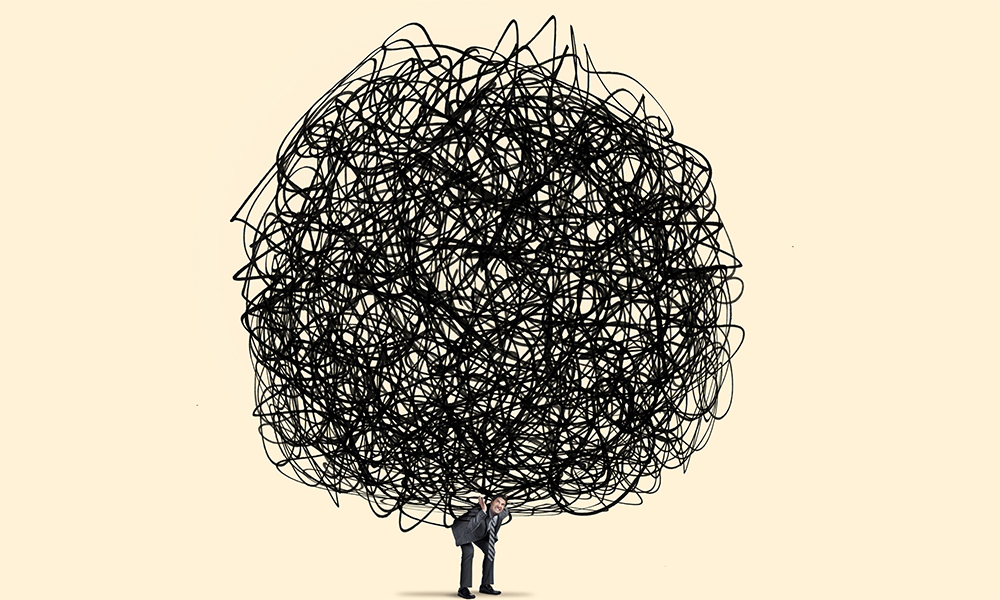When you are not afraid of rejection and it feels like you have nothing to lose, amazing things can happen. ~ Jia Jiang
“No” is a word you probably hate hearing. It might make you feel hurt, embarrassed, angry or hopeless. Whether you’re passed over for a promotion or turned down by a colleague you asked for help, rejection is a bitter pill to swallow – which is why so many people refuse to put themselves in situations where they might be rejected. They choose not to apply for their dream role or project, because they might not get it. They don’t ask for resources or suggest new ideas, because they may be refused. They never make the first move towards relationships, because there’s a chance the other person might not respond favourably.
Time and time again, people who are afraid of rejection select safety over the risk of hearing “no”. In other words, they reject themselves before the world has a chance to do so.
Rejection is especially hard for star performers and senior leaders to handle (one of the side-effects of abundant success). Even if you work up the courage to ask for something, a single “no” might crush you completely. That’s exactly what happened to Jia Jiang, a 30-year-old corporate hotshot who fell apart when the investor he’d pinned all his hopes on rejected his start-up. Luckily, Jiang was also smart enough to realise that in the long run, his fear of rejection would hold him back much more than a failed investment.
So, to conquer this fear, Jiang decided to try rejection therapy – which is the focus of my message this week. Getting over your fear of being rejected opens up new possibilities that promise greater success. How can you learn to deal better with rejection? And how can you be kinder when saying “no” to someone else?
Science shows that when you’re rejected, your brain starts releasing opioids, just like with physical trauma. Hence, the pain you feel upon hearing “no” isn’t imaginary – it’s extremely real! Fortunately, you can learn to steel yourself against it.
As you become more comfortable with rejection, the fear stops holding you back: you start taking chances and aiming for things you really want. You also gain valuable insights that could help you turn a “no” into a “yes”.
Developed by Jason Comely, a Canadian entrepreneur, rejection therapy involves intentionally and repeatedly seeking out rejection, with the objective of desensitising yourself to being told “no”. Inspired by this concept, Jiang decided to attempt 100 days of rejection therapy, creating a blog to document his journey. Every day, he challenged himself with new, outrageous tasks – from requesting a “burger refill” at a fast-food outlet, to asking if he could make the safety announcement on a flight, to requesting Krispy Kreme for special “Olympic donuts” (a video that went viral).
Jiang soon found himself becoming more confident while making requests and more relaxed – even humorous – in the face of rejection. But the other development was more surprising: he began hearing “yes” far more than he had anticipated. At the end of 100 days, he had 51 “no”s and 49 “yes”s.
Jiang went on to write Rejection Proof, a book that traces his journey and learnings. In it, he draws an important distinction between failure and rejection, explaining why rejection hurts us so deeply:
…there are all sorts of ways to turn failure into a positive. You could say “I simply wasn’t good at it,” vow to get better, or remind yourself of the thousands of other things you’re amazing at. You could say “I made some mistakes”—because, after all, who doesn’t? You could say “I learned a lot from this” and come out actually feeling better, more experienced, and wiser than before you failed.
Rejection, on the other hand, is not cool at all. It involves another person saying no to us, often in favor of someone else, and often face-to-face. Rejection means that we wanted someone to believe in us but they didn’t; that we wanted someone to like us but they didn’t…. That feels deeply personal to a lot of us. It doesn’t just feel like a rejection of our request, but also of our character, looks, ability, intelligence, personality, culture, or beliefs.
Dealing with rejection, therefore, calls for a unique approach. Here are four key insights shared by Jiang to help you reframe your understanding of and response to rejection:
1. Rejection is an opinion
Rejection isn’t an absolute truth; it’s simply what other people think at a particular moment in time. They might reject you or your idea for all kinds of reasons: their mood, circumstances, education, experience, culture, etc. – not to mention all kinds of outside influences. Why, then, should we take a negative response so personally? As Jiang explains:
This simple but profound realization helped me to start taking the emotion out of rejection—and to look with new eyes at the decisions people make.
2. Rejection is a path
Perhaps one of the most well-known rejection stories of our times is that of JK Rowling. Her manuscript for the first Harry Potter book was rejected by 12 different publishers. Only when the granddaughter of one of the publishers happened to get her hands on the manuscript did things take a turn for the better – and the rest is history. Watch her Harvard commencement speech on the fringe benefits of failure, if you haven’t already.
Rowling is just one name on a long list of people who were firmly and repeatedly rejected before finally tasting success – from Alibaba founder Jack Ma who applied to 30 different jobs and was turned down by all, to Steven Spielberg who was rejected by USC’s top-notch film school three times. In a way, then, success is often a numbers game: only through multiple rejections do some people finally arrive at an acceptance. If you don’t develop the ability to bounce back and keep going, you might never achieve your big, audacious goal.
3. Rejection is an opportunity
If your idea is turned down, don’t instantly end the conversation and leave. Instead, Jiang suggests staying engaged and asking “why”. You may realise there’s something you can do differently, which could turn the rejection into an acceptance. You may learn that the negative response has nothing to do with you and everything to do with the current circumstances – which means you could get a different answer at another time. You may even get a referral or lead that can produce success. There are only upsides to asking “why”, so don’t hesitate to seek out more information.
4. Rejection isn’t absolute
In the face of being rejected, you might persist with your original request (which is likely to annoy the other person) or give up altogether (which means you don’t get what you want). Instead of these two extreme responses, why not try something in the middle? Jiang recommends retreating, reassessing and making a lesser request. Research shows that people are less likely to say “no” a second time if the requestor makes a concession. Hence, “If you can’t do this, can you do something else?” is a great way to manoeuvre around a rejection.
When you’re the one saying “no”
As a leader, you sometimes have to say “no” to other people, including your team members. How can you do this in a way that doesn’t destroy their self-esteem or damage trust? Here are three suggestions:
1. Patience and respect help to soften the blow
This seems obvious, but it’s amazing how many people are unnecessarily rude or harsh while saying “no”. Being kind during rejection also earns you goodwill and respect – making it especially important for leaders.
2. Being direct is better than beating around the bush
Jiang gives an example from Microsoft: when laying off 12,500 employees from its Nokia division, the company sent an 1100-word memo that began misleadingly with “Hello there”, spent 10 paragraphs detailing Microsoft’s current strategy and situation, and finally announced the layoffs in paragraph 11! This created a PR nightmare and became an example of how not to deliver bad news. As Jiang explains:
When you deliver a rejection to someone, give the bad news quickly and directly. You can add the reasons afterward, if the other person wants to listen. No one enjoys rejection, but people particularly hate big setups and “yes-buts.” They don’t lessen the blow—in fact, they often do quite the opposite.
3. Offer alternatives that show a way forward
Could a few changes get them to a “yes”? Are there any other projects or departments who might be interested? Can you suggest a different option? Not only are these alternatives helpful for the other person, but they also reinforce trust between the leader and team member – even in rejection.








Comments